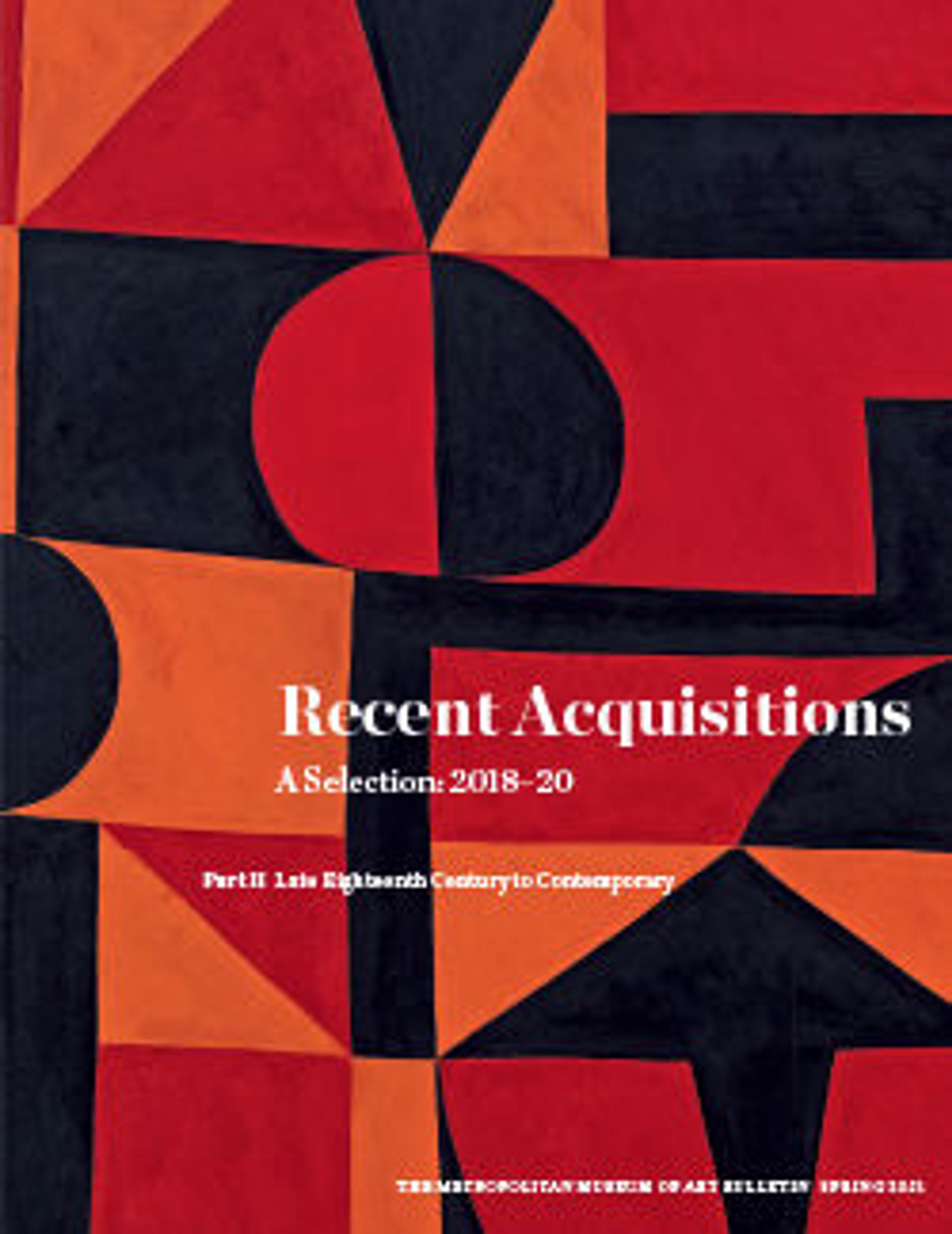Autumn (Scene in a Roman Garden)
Known for evocative recreations of the ancient world, Alma-Tadema here represents Roman men and women of different ages enjoying a warm fall day. At left, two young men sit in companionable contemplation near an older bearded figure whose pose and expression convey stoicism. The stillness of the seated forms contrasts with the suggested movement of a young couple strolling on a path at right. The curved marble bench, or exedra, bears a Latin inscription that refers to the Emperor Hadrian and demonstrates how the artist skillfully adapted archaeological sources to add authenticity. In this case, the form is borrowed from a bench-shaped memorial-tomb on the Via dei Sepolcri at Pompeii. Visually, its curved form brings several figures into proximity without implying a specific narrative. An exquisite example of the artist's draftsmanship, this sheet was created for the printmaker Leopold Löwenstam, who regularly etched Alma-Tadema's compositions, and a related print was published in 1880.
Artwork Details
- Title: Autumn (Scene in a Roman Garden)
- Artist: Sir Lawrence Alma-Tadema (British (born The Netherlands), Dronrijp 1836–1912 Wiesbaden)
- Date: ca. 1874–79
- Medium: Graphite
- Dimensions: Sheet: 6 1/2 × 21 1/2 in. (16.5 × 54.6 cm)
- Classification: Drawings
- Credit Line: Purchase, Friends of Drawings and Prints Gifts and Ian Woodner Family Collection Fund, 2018
- Object Number: 2018.350
- Curatorial Department: Drawings and Prints
More Artwork
Research Resources
The Met provides unparalleled resources for research and welcomes an international community of students and scholars. The Met's Open Access API is where creators and researchers can connect to the The Met collection. Open Access data and public domain images are available for unrestricted commercial and noncommercial use without permission or fee.
To request images under copyright and other restrictions, please use this Image Request form.
Feedback
We continue to research and examine historical and cultural context for objects in The Met collection. If you have comments or questions about this object record, please contact us using the form below. The Museum looks forward to receiving your comments.
